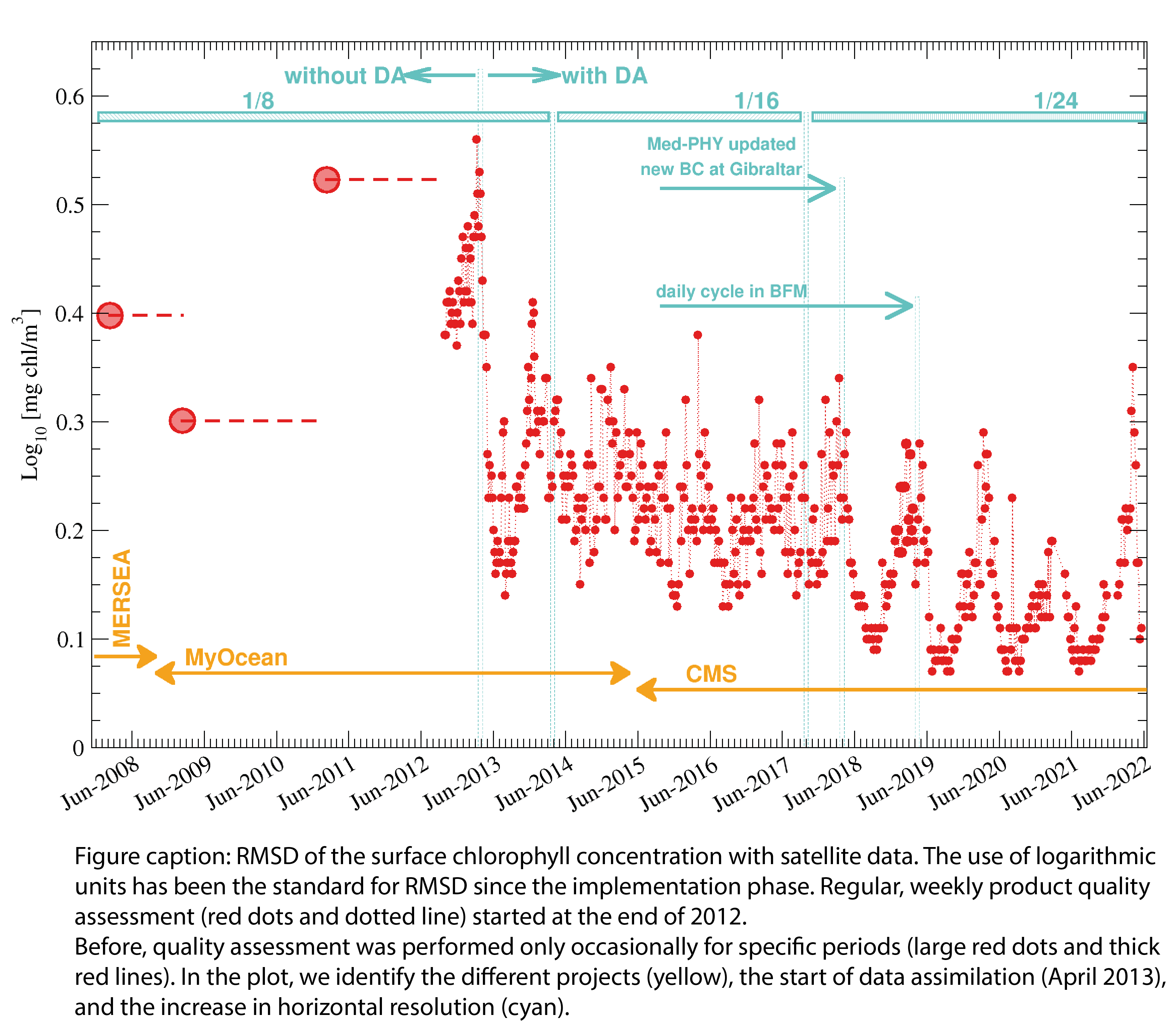The MedEAF forecasting system for the Mediterranean Sea has followed the developments of the EU operational marine services: deployed within the MERSEA project (2004–2008), the system has become pre-operational during the MyOcean projects series (2009–2015), and has then finally established a regular and validated operational product delivery in the Copernicus Marine Service (CMS). Across this period, the quality of the MedEAF forecast has significantly increased: the figure reports the weekly averaged skill performance for the first-day forecast of the surface chlorophyll concentration (the only variable that has been consistently validated since 2008), which is quantified by the Root Mean Square Difference (RMSD) between model and satellite data. The MedEAF forecasting system has been continuously improved, taking advantage of the implementation of the data assimilation (in 2013), the increased spatial resolution (in 2014), the updates of the biogeochemical boundary conditions at Gibraltar Strait (in 2018), the inclusion of the daylight daily cycle (in 2019). Furthermore, important benefits for the MedEAF skill improvement are also linked to the evolutions in the physical component of the CMS Mediterranean Sea forecasting system: the alignment between the physical and biogeochemical models in terms of the same horizontal resolution, bathymetry, boundaries (number and position of rivers), and surface forcing has guaranteed the consistency of the results. Keeping track of the skill performance evolution is important in order to: 1) quantify and comunicate the accuracy of the forecasting system, and 2) monitor possible anomalous behaviors of the system. The figure shows that we can predict the phytoplankton blooms (of which the surface chlorophyll concentration is a proxy) 3 times better than 8 years ago. Moreover, the recent increase of the RMSD during spring 2022 highlights that the forecasting system was not able to correctly reproduce a possible anomalous bloom event related to an intense episode of Saharan dust in the Levantine basin, a component presently not included in the MedEAF biogeochemical model.
